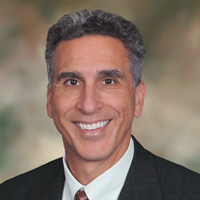Retirement Planning That May Help You Enjoy Your Second Childhood
Given inflation, rising interest rates and a possible recession, how can near-retirees feel confident that their planning will help ensure a fun and secure retirement?


Traveling. Spending more time with your children and grandchildren. Taking up dancing. Volunteering more. These are just a few ways that retirees might want to spend their retirement. Some nearing retirement may be wondering how their retirement planning can achieve these with a fluctuating market, inflation and a looming recession.
“Make a new plan, Stan”
It was Paul Simon who said, “Make a new plan, Stan.” Well, he was right. It’s all about the plan. A retirement plan, I believe, is so important for your retirement and to living your Second Childhood Without Parental Supervision.
First, you have to figure out where you are now. Where you are now means how much money you currently have. Also, where do you live? Are taxes high in the state you live in? Does the state have no state tax? Are property taxes high in your area? We think these are all important questions.
From just $107.88 $24.99 for Kiplinger Personal Finance
Be a smarter, better informed investor.

Sign up for Kiplinger’s Free Newsletters
Profit and prosper with the best of expert advice on investing, taxes, retirement, personal finance and more - straight to your e-mail.
Profit and prosper with the best of expert advice - straight to your e-mail.
Next, we need to look at how much you will need to have to retire on. We refer to that as your magic number. Once you know that, you compare where you are now to that number. If you meet that number, then congratulations, in our view, you may be able to retire now, as long as you maintain your current lifestyle. However, if you don't have that number, then we need to roll up our sleeves and build a plan to get you to that number.
Assess Appropriate Risk
So, you may be asking, “How do I have peace of mind during that whole process?” The amount of risk you take, I think, will determine to a great degree how much peace of mind you have. For example, if you put all your money in a safe deposit box, because you have enough, then now you may have little to no stress about inflation or whatever else, because you've got it covered and you're done.
On the other hand, if you're investing in Bitcoin, you are probably very worried. Somewhere between those two lies the amount of risk that is probably appropriate for you. So, that peace of mind comes from taking only the appropriate amount of risk to accomplish your goals, which is an investment principle of ours.
Invest and Protect
After you figure out your appropriate risk, we believe you should have a strategy designed to help protect your principal from the unexpected, which unfortunately happens. We don't know what it's going to be, but we know that it is likely to happen. Just in the last three years, we've had a pandemic, and we've had an attack of inflation, but we have a strategy, our Invest and Protect Strategy, which we believe helped to protect us from both of those. So, having a plan to protect you against the bad things, even though you don't know what they will be, is critical in our view.
Some strategies for retirement investments ask you to ride the market like a roller coaster. That level of risk taking may work for some, but we think that roller coaster rides can be dangerous to your financial health when you’re retired or close to retirement.
Enjoy Second Childhood
So, there are two parts to enjoying your retirement through planning. The first one is figuring out how much risk you need to take. Are you there? Do you have your magic number? Can you build toward it? Figure out how much risk is appropriate to accomplish your goals and don't take any more than that.
And second, have a Plan B if things take a turn, such as if we have a big bad bear market. We believe you should have a plan to address either of those. In our view, that could go a long way toward giving you peace of mind in your retirement.
At Retirement Planners of America (RPOA), we believe if you are 50 or over, the time to plan is now, not when you’re in the middle of retirement.
In our view, once you’re retired or close to retirement, it’s time to prioritize the protection of your principal.
All expressions of opinion reflect the judgment of the author, Ken Moraif, as of the date of publication and are subject to change. Ken Moraif is a controlling owner and investment adviser representative of MMWKM Advisors, LLC, doing business as Retirement Planners of America (“RPOA”), which is an SEC registered investment adviser. Registration as an investment adviser is not an endorsement by securities regulators and does not imply that ROPA has attained a certain level of skill, training, or ability. Ken Moraif has worked in the financial services industry since 1988. He has been a CERTIFIED FINANCIAL PLANNER™ professional since 1998. Certified Financial Planner Board of Standards Inc. owns the certification marks CFP®, Certified Financial Planner™ and federally registered CFP (with flame design) in the U.S., which it awards to individuals who successfully complete CFP Board’s initial and ongoing certification requirements.
This article should not be construed as a solicitation to affect, or attempt to affect transactions in securities, or the rendering of personalized investment advice. Any target referenced in this article is not a prediction or projection of actual results and there can be no assurance that any target will be achieved. RPOA makes no warranty, express or implied, for any decision taken by any party in reliance upon the information discussed.
All investment strategies have the potential for profit or loss. Investment strategies such as diversification do not assure or guarantee better performance and cannot eliminate the risk of investment losses. There is no guarantee that a portfolio employing these or any other strategy will outperform a portfolio that does not engage in such strategies. Economic factors, market conditions, and investment strategies will affect the performance of any portfolio and there are no assurances that it will match or outperform any benchmark. Past performance is not indicative of future results. Different types of investments involve varying degrees of risk, and there can be no assurance that the future performance of any specific investment or investment strategy will be profitable or equal any historical performance levels.
The Invest and Protect Strategy refers to a strategy RPOA fundamentally employs for its clients. RPOA previously employed a similar strategy that it referred to as the “buy, hold, and sell” strategy or “buy hold, and protect” strategy. Ken Moraif is the author of “Buy Hold & Sell: The investment strategy that could save you from the next market crash.” Although the name of this book is similar to the Strategy, it is not an actual representation of how Retirement Planners of America would manage its clients’ assets or a representation of its benefits.
Historic references to recommendations made under the strategy that predate 2011; and statements such as and similar to: “we told our clients to be out of the market in 2007 and 2008,” “we told our clients to get back into the market in 2009,” and “clients that followed our advice were out of the market in 2008;” refer to strategies collectively employed and recommendations collectively made by RPOA’s principals while employed at Eagle Strategies, LLC., and also at Cambridge Investment Research Advisors, Inc. Three of the five principals remain as principals today, including founder, Ken Moraif. RPOA has been employing the Strategy since its inception in 2011. Therefore, any references to RPOA’s performance or its investment advisory recommendations predating 2011 generally refer to recommendations made by its principals at the respective other firms described above.
Readers of this article should not rely on the content as the sole basis for any investment decisions. A professional adviser should be consulted and/or independent due diligence should be conducted before implementing any of the options directly or indirectly referenced. Any hyperlinks included in this article are provided as a convenience for educational and informational purposes only. RPOA does not make any representations or warranties as to the accuracy, timeliness, suitability, completeness, or relevance of any information prepared by any unaffiliated third party, whether hyperlinked within the article or otherwise incorporated herein, and takes no responsibility for the same.
Profit and prosper with the best of Kiplinger's advice on investing, taxes, retirement, personal finance and much more. Delivered daily. Enter your email in the box and click Sign Me Up.

Ken Moraif is the CEO and founder of Retirement Planners of America (RPOA), a Dallas-based wealth management and investment firm with over $3.58 billion in assets under management and serving 6,635 households in 48 states (as of Dec. 31, 2023).
-
 The Final Countdown for Retirees with Investment Income
The Final Countdown for Retirees with Investment IncomeRetirement Tax Don’t assume Social Security withholding is enough. Some retirement income may require a quarterly estimated tax payment by the September 15 deadline.
-
 Hot August CPI Report Doesn't Shift the Rate-Cut Needle: What the Experts Say
Hot August CPI Report Doesn't Shift the Rate-Cut Needle: What the Experts SayThe August CPI came in higher than forecast on a monthly basis, but Wall Street still expects a rate cut at next week's Fed meeting.
-
 Four Clever and Tax-Efficient Ways to Ditch Concentrated Stock Holdings, From a Financial Planner
Four Clever and Tax-Efficient Ways to Ditch Concentrated Stock Holdings, From a Financial PlannerHolding too much of one company's stock can put your financial future at risk. Here are four ways you can strategically unwind such positions without triggering a massive tax bill.
-
 Beyond Banking: How Credit Unions Serve Their Communities
Beyond Banking: How Credit Unions Serve Their CommunitiesCredit unions differentiate themselves from traditional banks by operating as member-owned financial cooperatives focused on community support and service rather than shareholder profit.
-
 Answers to Every Early Retiree's Questions This Year, From a Wealth Adviser
Answers to Every Early Retiree's Questions This Year, From a Wealth AdviserFrom how to retire in a crazy market to how much to withdraw and how to spend without feeling guilty, a financial pro shares the advice he's given this year.
-
 The Risks of Forced DST-to-UPREIT Conversions, From a Real Estate Expert
The Risks of Forced DST-to-UPREIT Conversions, From a Real Estate ExpertSome new Delaware statutory trust offerings are forcing investors into 721 UPREIT conversions at the end of the hold period, raising concerns about loss of control, limited liquidity, opaque valuations and unexpected tax liabilities.
-
 I'm a Financial Adviser: You've Built Your Wealth, Now Make Sure Your Family Keeps It
I'm a Financial Adviser: You've Built Your Wealth, Now Make Sure Your Family Keeps ItThe Great Wealth Transfer is well underway, yet too many families aren't ready. Here's how to bridge the generation gap that could threaten your legacy.
-
 Want to Advance on the Job? Showing Some Courtesy and Appreciation Could Help
Want to Advance on the Job? Showing Some Courtesy and Appreciation Could HelpTwo business professors share their insights about the impact of digital communication on the social skills of some in Gen Z and the importance of good manners on the job.
-
 From Job Loss to Free Agent: A Financial Professional's Transition Playbook (and Pep Talk)
From Job Loss to Free Agent: A Financial Professional's Transition Playbook (and Pep Talk)The American workforce is in transition, and if you're among those affected, take heart. You have the skills, experience and smarts that companies need.
-
 A Financial Planner's Top Five Items to Prioritize When Your Spouse Is Ill
A Financial Planner's Top Five Items to Prioritize When Your Spouse Is IllDuring tough times, it's easy to overlook important financial details, but you'll be so much better off if you take care of these things right now.